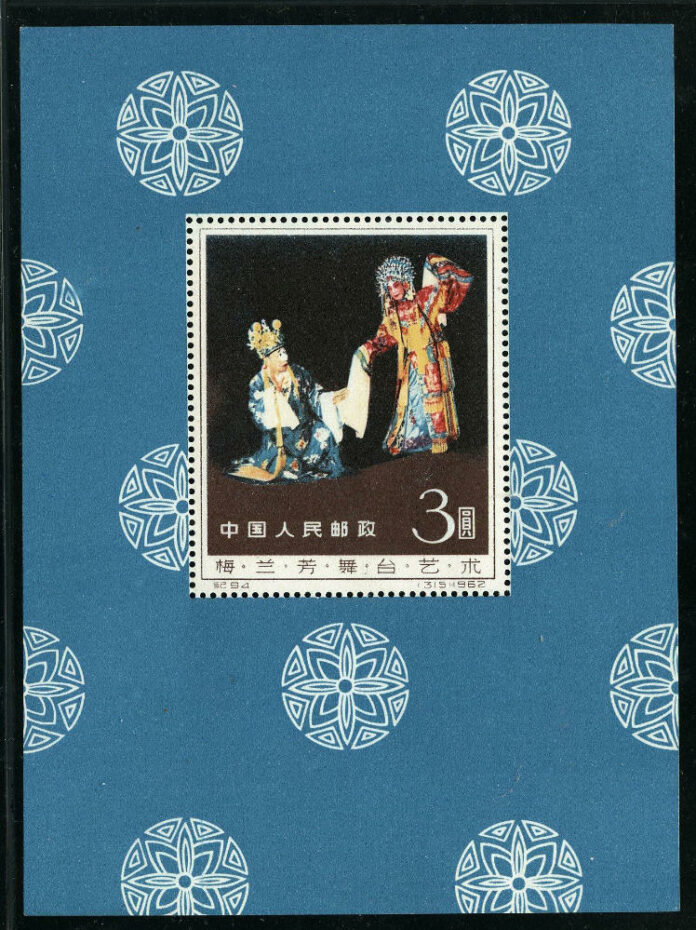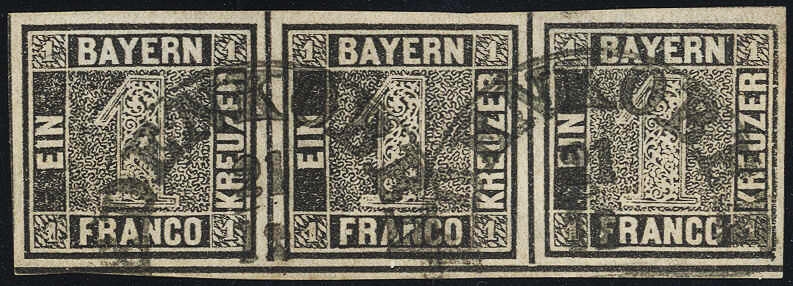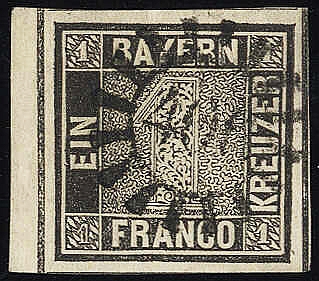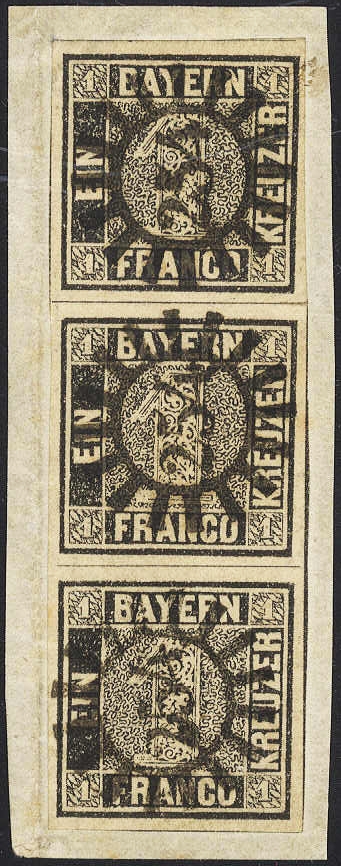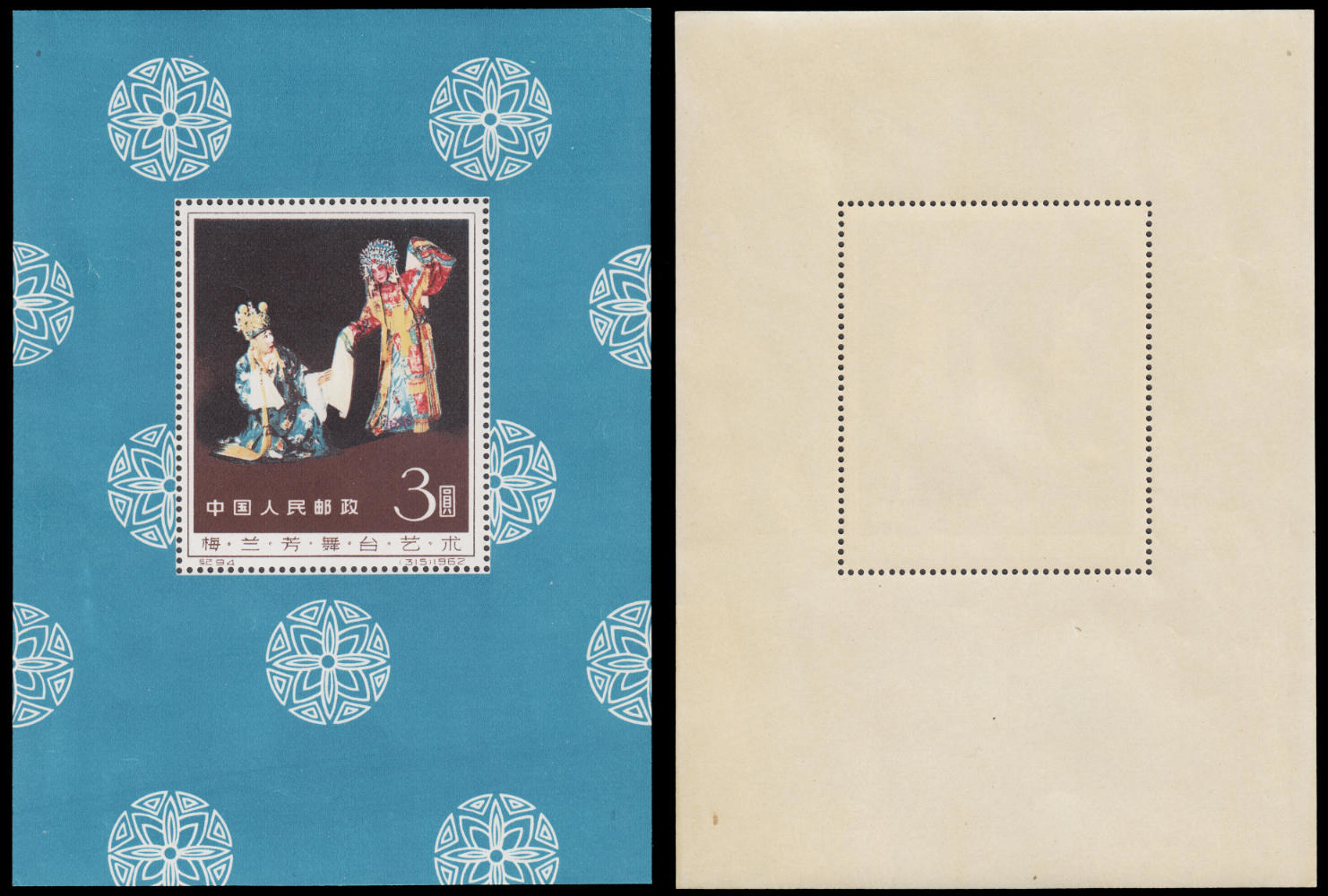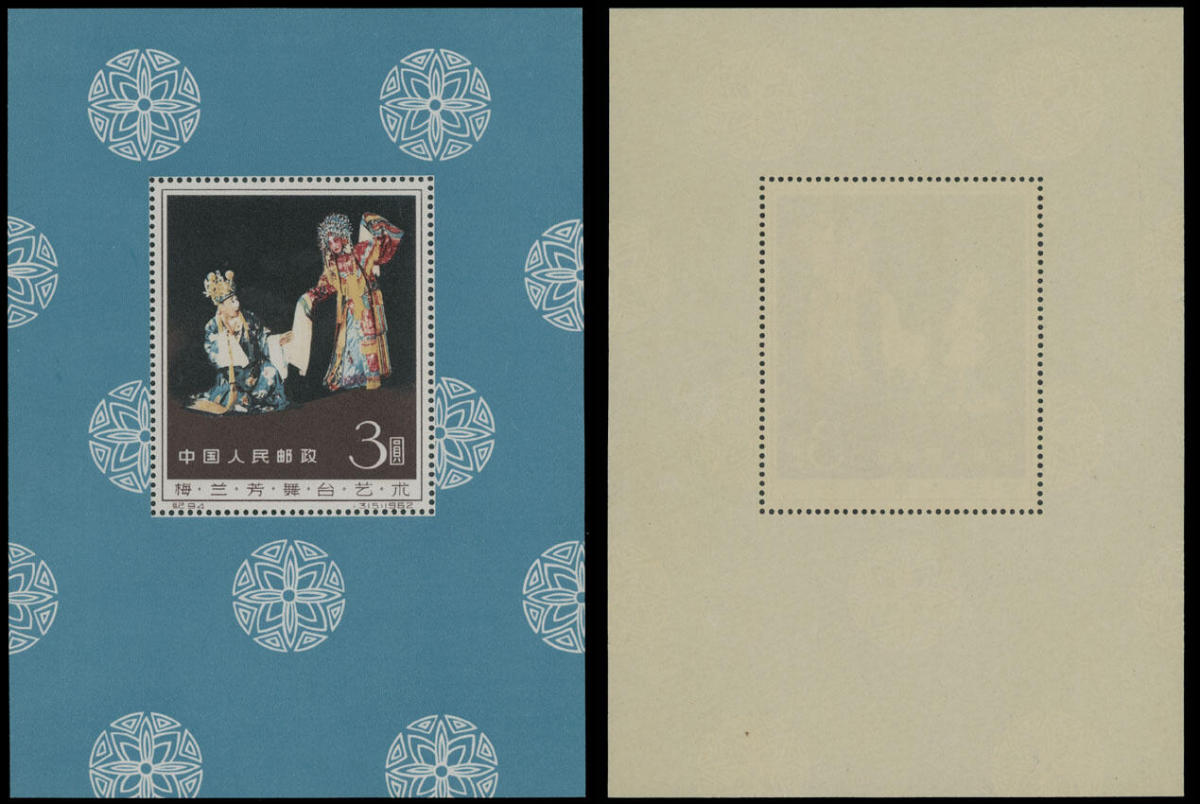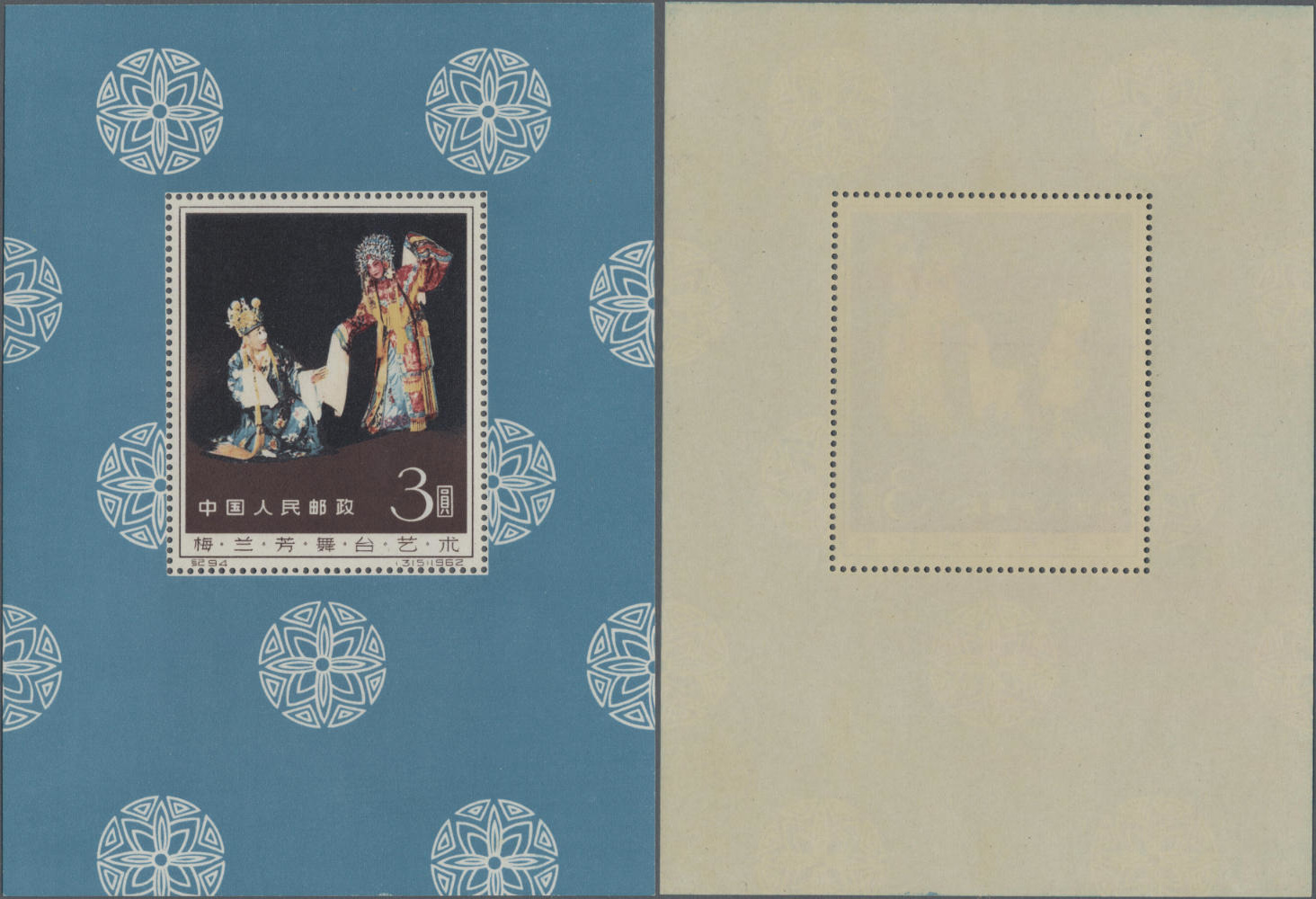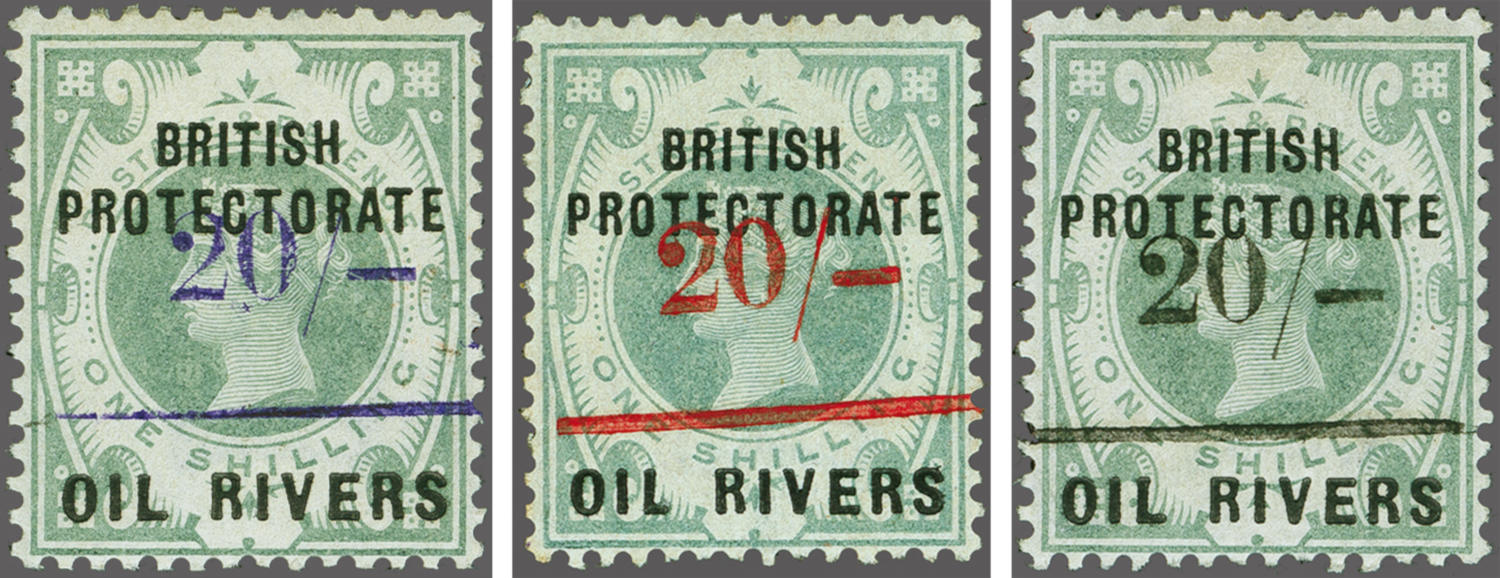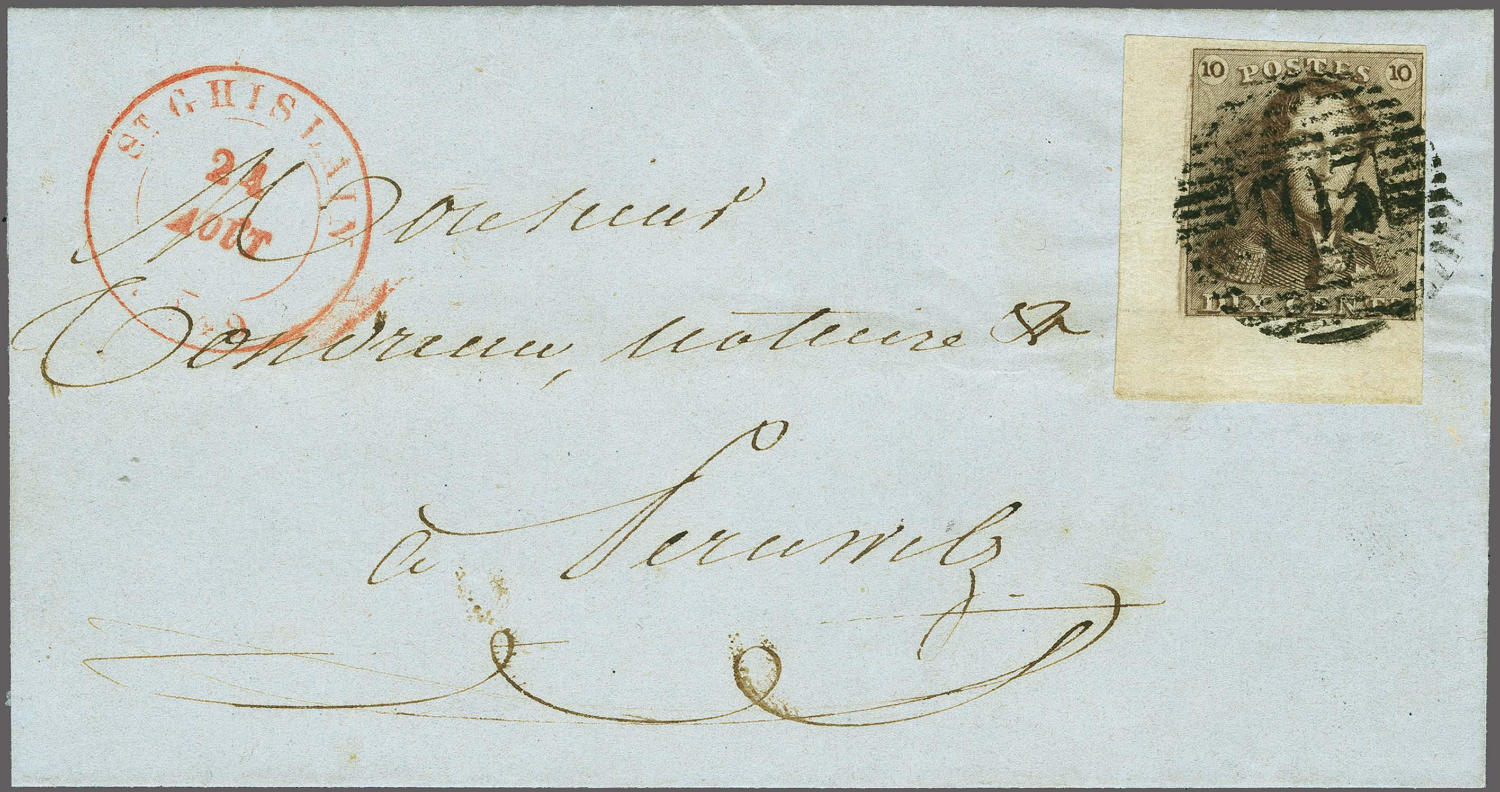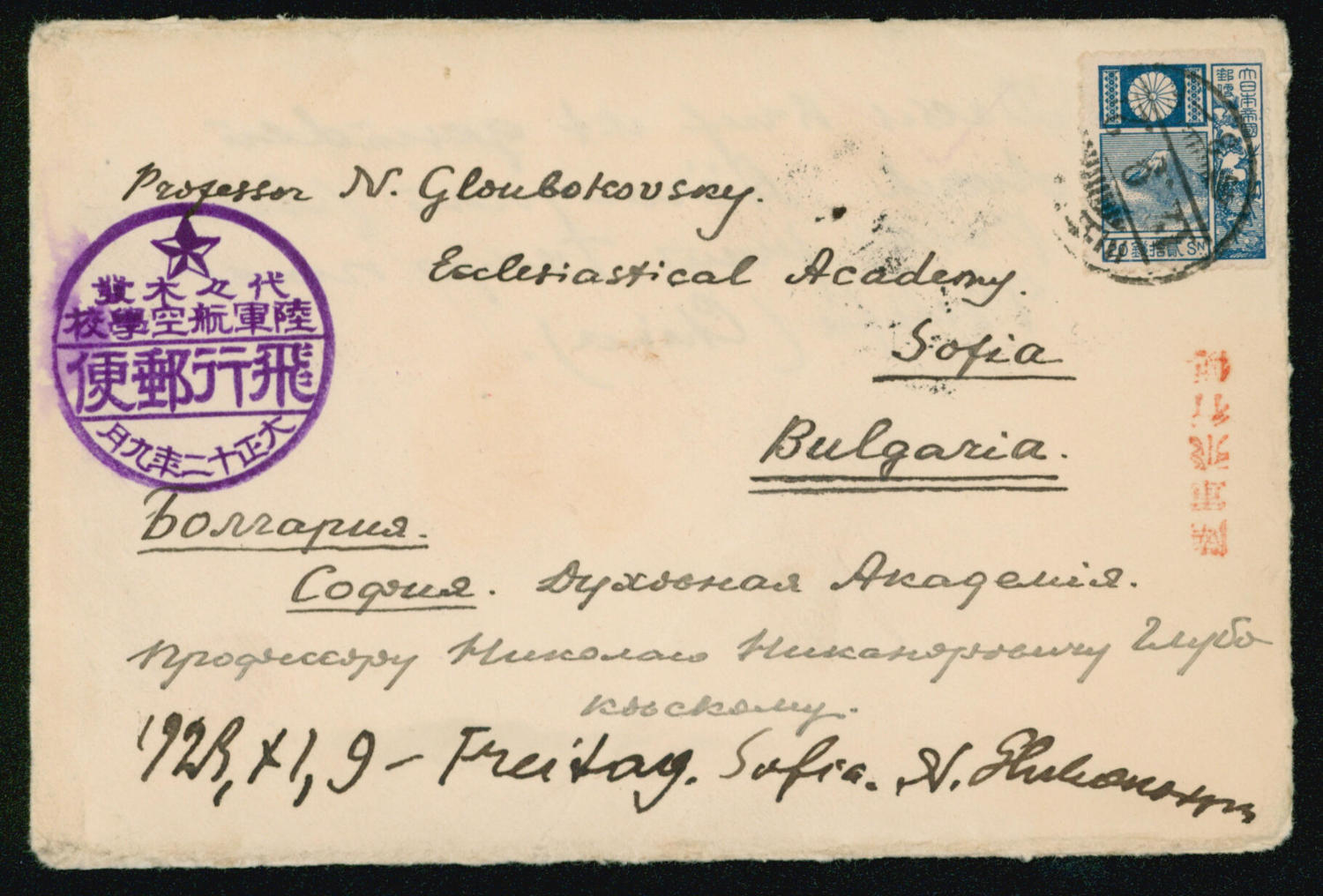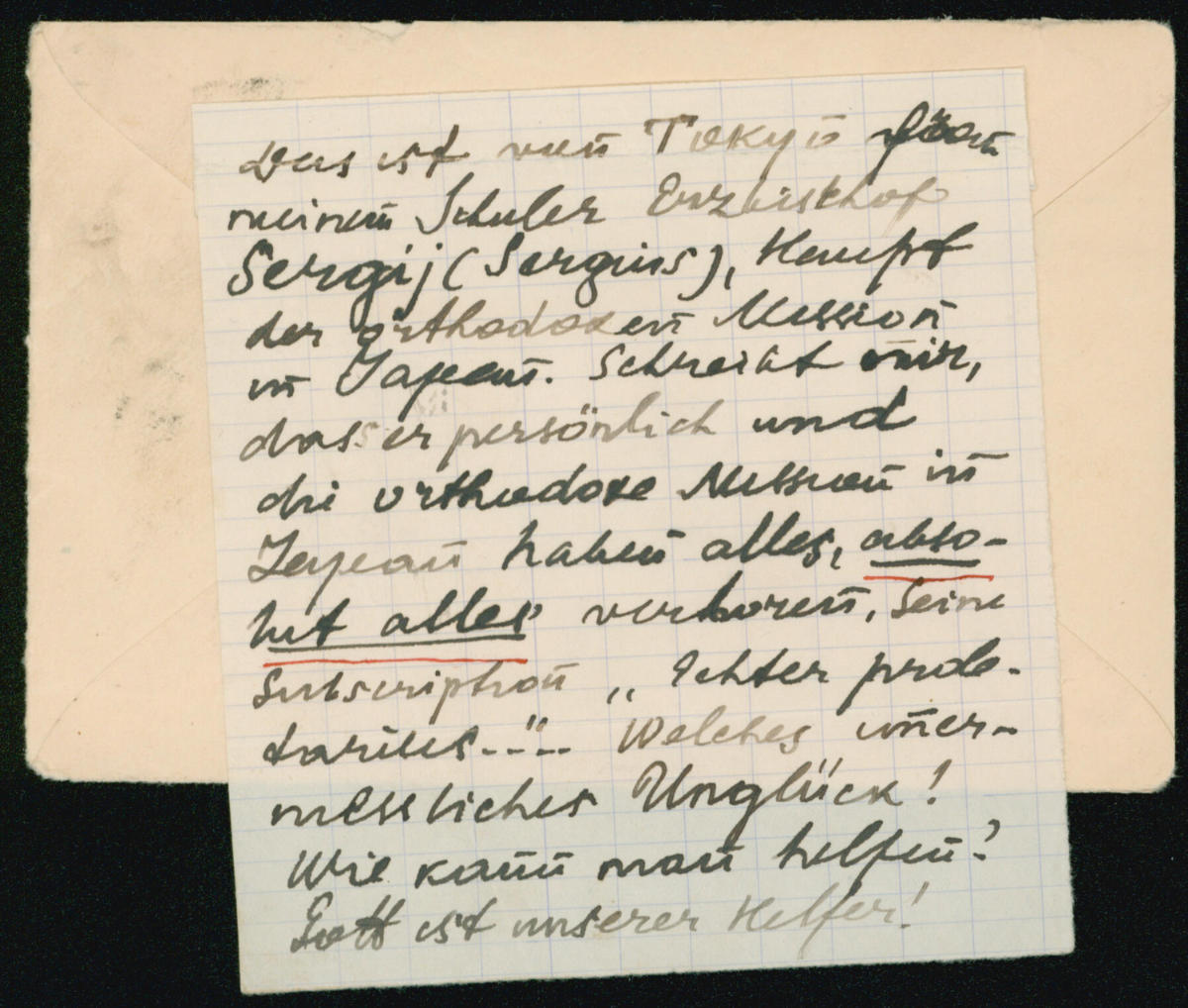In the first half of 2022, stamp auctions impressed with top prices, from the classic period to the modern era. In addition to wealthy philatelists, investors also play a role in current market activities.
90 Kreuzers for 450,000 Euros: “Schwarzer Einser”, No. 1 of the German States
Bavaria was the first German state to introduce stamps in 1849 to frank postal items. No. 1, the stamp with the lowest face value of one kreuzer, became famous and coveted by collectors as the “Schwarzer Einser” (Engl.: one kreuzer black).
In Munich, where the stamp was created, a bid of 450,000 euros was submitted for half a press sheet including 90 stamps in the 70th Deider auction sale held in 2022. Between both halves, there is a horizontal empty gutter, almost all stamps are mint never hinged. The museum-worthy specimen is considered unique in private hands and comes from the collection of the renowned stamp expert Maria Brettl. Outstanding postmarked pieces brought up to 2,500 euros, strips of three sold for 14,500 and 10,500 euros.
The “Drunken Concubine”: China’s Most Expensive Block
60 years ago, in the summer of 1962, the most expensive postal issue in the People’s Republic of China was released. Eight motifs honoured the most famous performer of Peking Opera, Mei Lan-fang (1894-1961). To crown it all, a large-format stamp of 3 yuan was issued from 15 September 1962 as a souvenir sheet, featuring a scene from his starring role as “Drunken Concubine”, surrounded by a white-and-blue decorated background. The issue is said to have included as few as 20,000 pieces, which sold quite poorly because the price was comparatively high by Chinese standards. Allegedly, remaining stocks were destroyed at the beginning of the Cultural Revolution.
Whereas the 1965 Michel catalogue still appraises MNH as well as postmarked specimens at 35 marks, prices have jumped in great leaps to 18,000 (MNH) / 8,000 (postmarked) euros by now. Interim periods of weakness have been overcome, as current auction results indicate.
It should be noted that completely flawless specimens are particularly rare. Michel points out: “Souvenir sheet 8 almost always has small flaws. There are appraisals for such specimens. Flawless pieces ★★ ca. 70 percent increase in price.”
We noted some MNH specimens of different quality that were sold on the European market over the past weeks at prices between 8,900 and 18.000 euros; plus commission fee of about 25–30 percent. Above are some examples with original descriptions, results and illustrations.
Together – for Once in a Century: “Oil Rivers” Provisionals of the “Old Calabar”
When the British started claiming the Niger Coast in West Africa as a protectorate in the 1890s, some rare provisional stamps were issued. British postage stamps were overprinted with local handstamps reading “OIL RIVERS” and indicating changed face values.
The three specimens with the “20/-” handstamp overprints in violet, red and black on 1-shilling stamps are referred to as “Old Calabar” provisionals and are among the rarest philatelic items of Africa and the British colonial territories. Corinphila in Zurich was able to hold a sale offering all three specimens – probably for the first time in a hundred years. They were featured in a special catalogue that covered a highlight collection of a collector with the pseudonym “BESANÇON”. The result: 520,000 francs after a starting price of 160,000 francs, way more than the appraisal of 380,000 pounds that is indicated in the Stanley Gibbons catalogue. Several other individual pieces were also sold for several times their starting price, and realised hammer prices beyond catalogue appraisals.
250,000 francs was achieved by the “Winterthur-Brief”, the cover piece of the catalogue with Swiss issues. Belgium’s sheet corner of No. 1 on an ex Provera cover jumped from 400 to 24,000 francs!
A Coveted Piece: From Japan to Bulgaria
Among the best results for 20th century covers, the depicted cover closed with a surprising result of 360,000 yen (ca. 2,800 euros) in Stampedia Auction’s 22nd sale. The individual stamp with the blue 20 Sen JPS 188 travelled to a professor at the Ecclesiastical Academy in Sofia, Bulgaria. The handwritten note 1923.XI.9 confirms the receipt. The contents report in German on a desired aid programme.



